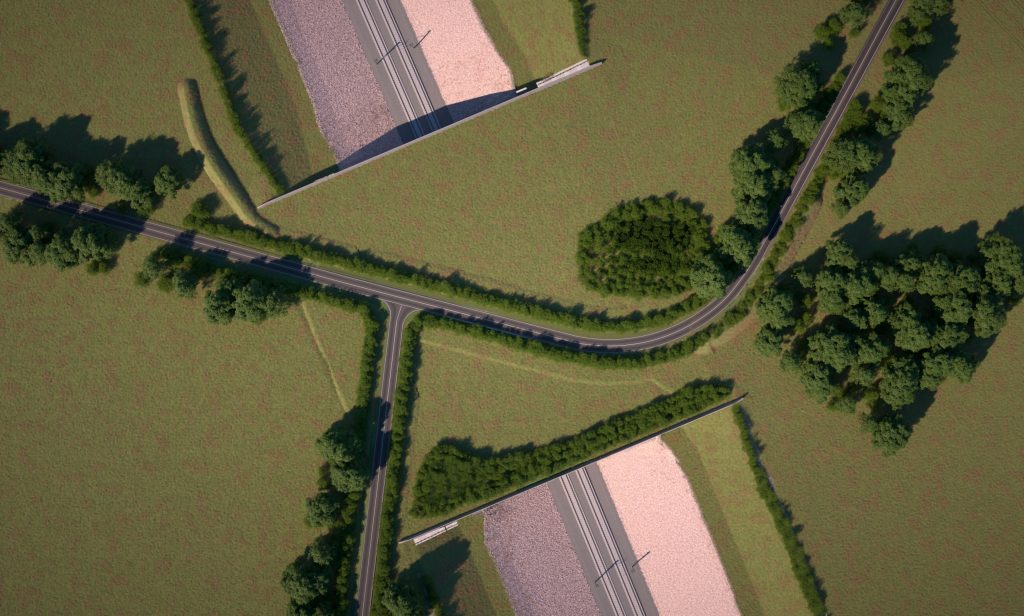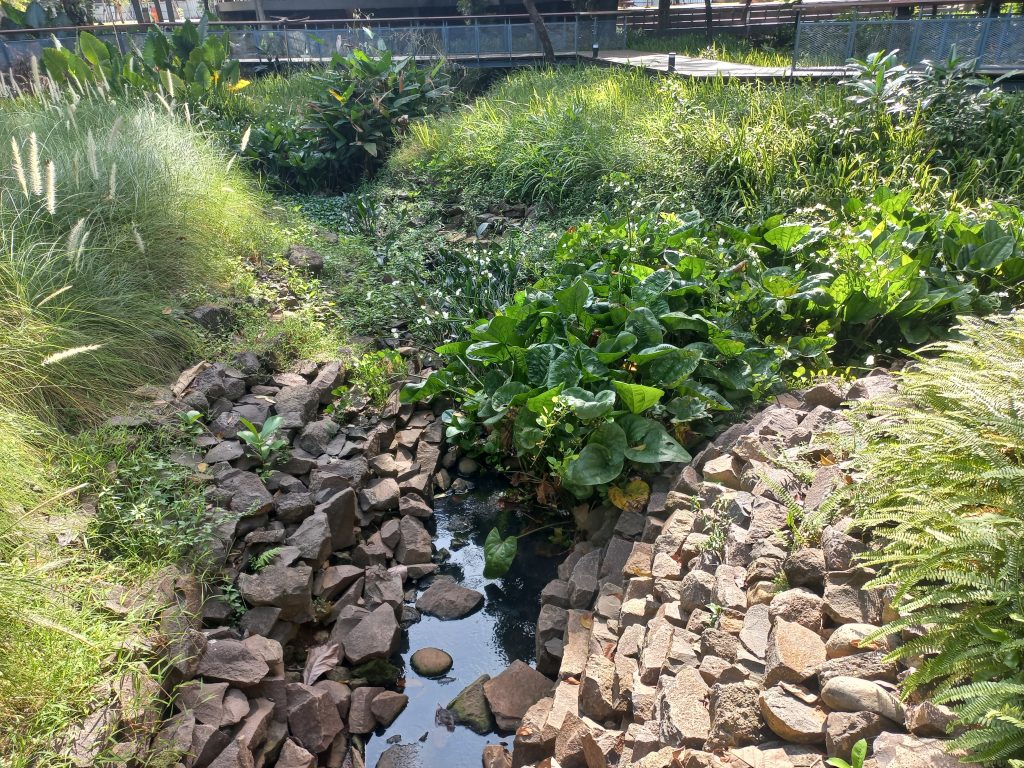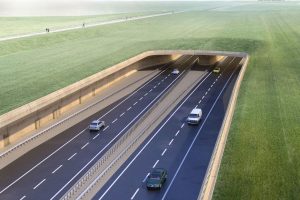Among the Labour government’s policy priorities, the protection of Britain’s nature and communities from climate change is set to play a central role.
A glance at recent findings confirms why. According to a report published by the Institute for Public Policy Research (IPPR) on 27 August, the UK “is one of the most nature depleted countries in the world”. Alarmingly, IPPR’s report - Driving ‘natural’ renewal: The progressive case for restoring the natural environment – also states that just 3% of England’s land area is protected for nature, against a government commitment to safeguard at least 30% by 2030.
Nature-based Solutions (NbS) are being deployed to address these challenges. Examples include restoring and protecting forests and wetlands in catchments, bringing nature into cities through blue-green infrastructure (BGI) and tree planting, as well as coastal habitat restoration.
NbS have also been the theme of 2023/24 ICE President Anusha Shah’s presidency. The economic and social ramifications of NbS have been foregrounded by Shah throughout her tenure, including her inaugural address, when she stated that a nature positive future is impossible without a people positive approach.
Mixed progress
Systra landscape discipline lead Jennifer Aston says NbS are gaining momentum, most recently driven by the introduction of biodiversity net gain (BNG) legislation in February. This will apply to development consent orders (DCOs) for Nationally Significant Infrastructure Projects (NSIPs) from November 2025.
However, she says that while legislation is helping drive change, implementation of NbS can present challenges for an industry traditionally familiar with hard engineering.
Uptake of NbS is often hindered by a perception that NbS are “difficult and challenging” she adds, citing the example of green bridges. Successfully pioneered in the Netherlands, their uptake in the UK has been relatively slow.
“Traditionalists don’t like them,” Aston says. “They’re seen as difficult to design because of the loading on them, and the need for irrigation, and for that reason they are costly.”
Often overlooked, however, is the fact that the benefits of green bridges outweigh their challenges. “What they can add is exponential in terms of connecting habitats, especially for protected species,” says Aston.
She says that one way to ensure that costs are streamlined is to ensure that landscape specialists and ecologists are involved in projects from inception, to ensure NbS are designed in early.
“It’s about working closely across disciplines, so the engineers can say what they need, ecologists say what they need, and landscape architects can facilitate that from a mediating position.”

Green bridges are underutilised in the UK.
Image: HS2’s 99m wide green bridge at Turweston in Buckinghamshire
Stantec NbS lead for the UK and Ireland Andrew Johns also advocates inter-disciplinary collaboration.
“Traditionally you’ll have a specific discipline appointed early to deal with a problem, and then everyone else comes in and has to fit around that, rather than it being a holistic nature-based design at the beginning and thinking about the end goal and the wider benefits.”
“Engineers are needed to make interventions function in terms of the flood risk management. But the landscape designers and the ecologists are making it work in terms of the integration, so you do need that cross sectoral approach.”
Another challenge with NbS relates to how they are planned and approved. NbS often consist of “small interventions over a large area,” Johns says. “But that isn’t how the industry is set up. The regulation and approvals process often needs a quick answer, and you can’t always undertake the required studies in the time you’ve got. So there needs to be more flexibility in there for NbS.”
Cost and benefits
Persuading project stakeholders that the higher upfront costs and complexity of NbS can be offset by longer term benefits is also critical, Johns says.
He cites Stantec’s involvement commencing as lead on New Orleans’ Blue and Green Corridors Project. Starting in 2018 and due for completion in summer 2025, the scheme’s aim is to alleviate repeated storm flooding in the neighbourhood of Gentilly.
The brief was to develop a scheme that would improve the resilience, health and economic prospects for the area, Johns says. The redesign used areas of ground to store water during flood events and create beneficial water areas to enhance the community.
“It also included a planted canal with water features and play spaces that brought amenity, health and financial benefits to the locality,” says Johns.
"It was not just solving that flooding problem, which could have been done with big storm sewers and other infrastructure,” he says. “It created a beautiful place to live. Calculations showed the project saving over US$4bn (£3bn) over the next 50 years in terms of mitigating flood damage; that calculation also includes the social and mental health wellbeing impacts.”
Pell Frischmann technical director for environment David West says his organisation is in conversation with UK water companies interested in NbS as part of their plans for AMP8.
However, he notes that NbS are sometimes seen to be a financial gamble for organisations.
“If they are working to a particular target in terms of improvements, there’s an element of risk associated with adopting a nature based solution. There is very little research or proof in terms of how effective it’s going to be versus using the tried and tested hard engineered solution that you can model.”
He adds: “The challenge is that if you’ve got an issue, for example a catchment where you need to reduce the number of sewage overflows, your target is to achieve that by 2025 [The Storm Overflows Discharge Reduction Plan, which aims to reduce sewage discharges, sets targets to reduce the use of storm overflows by 2025]. That means you don’t have time to start thinking outside of the box about NbS.”
However, West believes promoting the cost savings and benefits of NbS can potentially lead to behavioural change. He cites the Reviving Tees Mouth scheme – a project in Northumbrian Water Group (NWG)’s 2025 to 2030 business plan – as an example of how NbS can be more beneficial and cost effective than engineered solutions.
“The thinking there has been: ‘Rather than taking an engineered approach to all these individual treatment works, let’s look at the coast and let’s look at the habitats there. Why don’t we do things like restore the salt marsh?’ They’re even talking about restoring oyster beds, which is going to create new potential for a shellfish industry around Newcastle.”
West notes that a traditional hard engineering solution would be costed at around £320M, while the cost for NbS is a fraction of that, at £46M.
Measuring success
West says data and modelling are vital in terms of providing tangible evidence of projects’ success and thereby ensuring that more projects come onstream. He adds that input from regulators and government bodies would be valuable to support a more standardised approach to delivery.
“More support and more guidance from regulators is needed on how to design NbS, what variables you need to consider, where the maths is and where the science is to be able to deliver them and standardising those. The Environment Agency, Natural England and others have got people that really know what they’re talking about, so more guidance from them would be beneficial.”
Stantec has been using technology to support NbS, such as Lidar attached to drones, which can capture the progress of NbS over time, Johns says. “It means you can do surveys very quickly. We’re able to build 3D models of entire catchments quickly using drones, and fly that drone multiple times over the catchment in the same flight pattern to build up a picture of the changing environment.”
Stantec was also involved in the development of the Construction Industry Research and Information Association’s Benefits Estimation Tool (B£ST), which has been successful in measuring the monetary value of BGI, often specified as part of NbS.

Data and modelling are vital in terms of providing tangible evidence of NbS projects’ viability
Where next?
Looking ahead, the experts spoken to by NCE say uptake of NbS has the potential not only to accelerate, but to be deployed at scale.
“One growing area of interest for governments is likely to be natural capital,” says West. The World Forum defines natural capital as the world’s stocks of natural assets, which include geology, soil, air, water and all living things. The World Bank has a natural capital accounting tool that can create a “balance sheet” of natural assets for countries. Natural capital accounting (NCA), which integrates natural resources and economic valuation, could drive greater uptake of NbS.
Aston concurs that NbS has a role to play in larger scale thinking about the role of engineering in the environment, to deal with “much bigger problems like climate change adaptation and climate resilience for large scale infrastructure”.
“Instead of tinkering around the edges planting trees, thinking around NbS should be more strategic and on a much larger scale,” she says. “For example, the new government has announced a target to build 1.5M homes. Let’s just make sure that environment’s still a key part of that pledge.”
“Good NbS isn’t just about that bit of the road where a roundabout is; it should be a much more regional piece. The fact is that a lot of the UK’s major schemes go under DCO; they’re Nationally Significant Infrastructure Projects, so let’s see where incorporating NbS can take us next.”
Johns is clear that engineers will continue to have a pivotal role. “At Stantec we are driving NbS. We’re here to make it make the case for it.”
He adds that younger engineers’ digital and ecological skillset is likely to drive greater future uptake of NbS.
“For almost all the new graduates coming through, the first question they ask is: ‘How do I get involved in nature based solutions?’”
Like what you've read? To receive New Civil Engineer's daily and weekly newsletters click here.
 New Civil Engineer Civil engineering and construction news and jobs from New Civil Engineer
New Civil Engineer Civil engineering and construction news and jobs from New Civil Engineer



Have your say
or a new account to join the discussion.